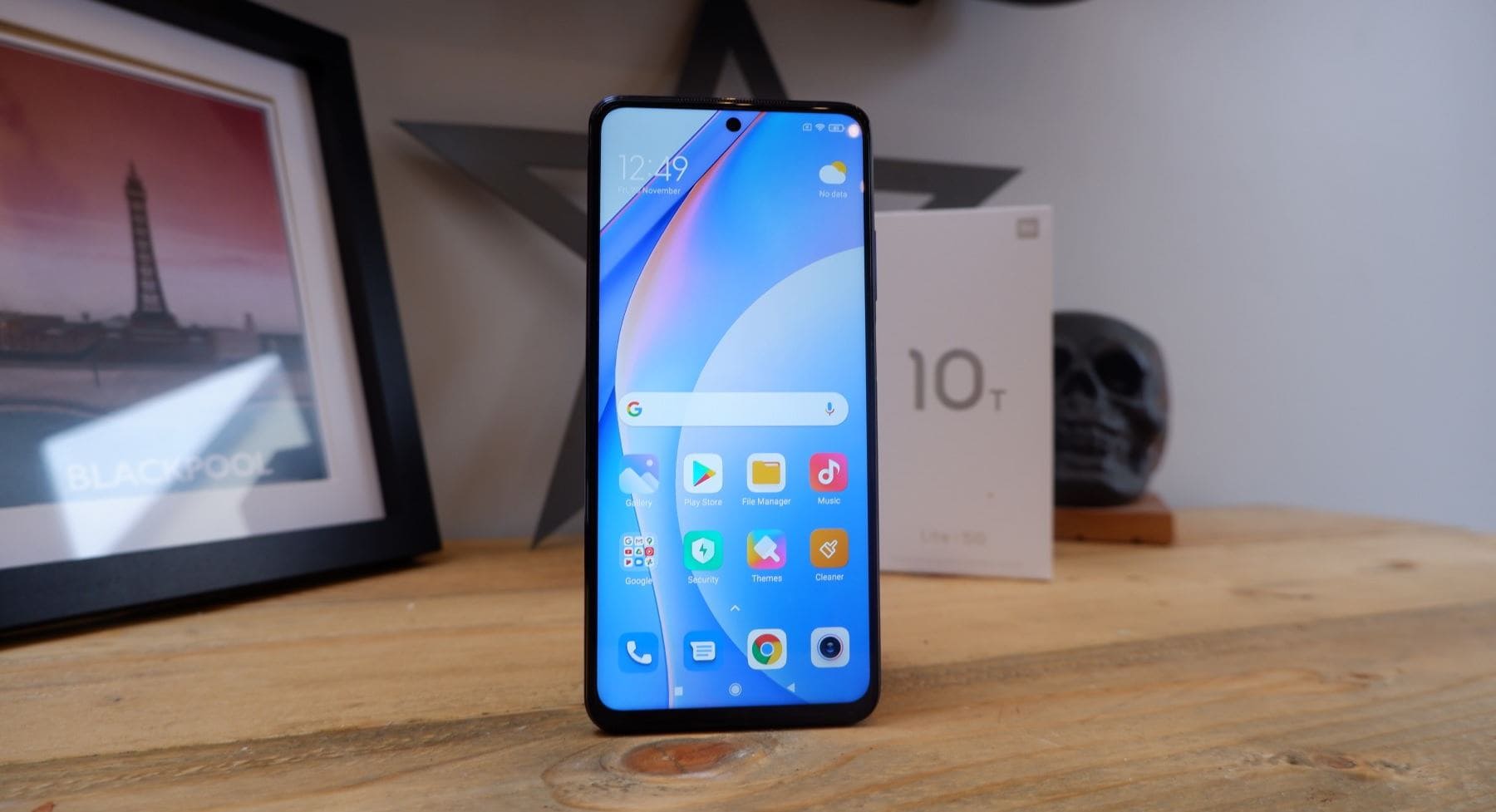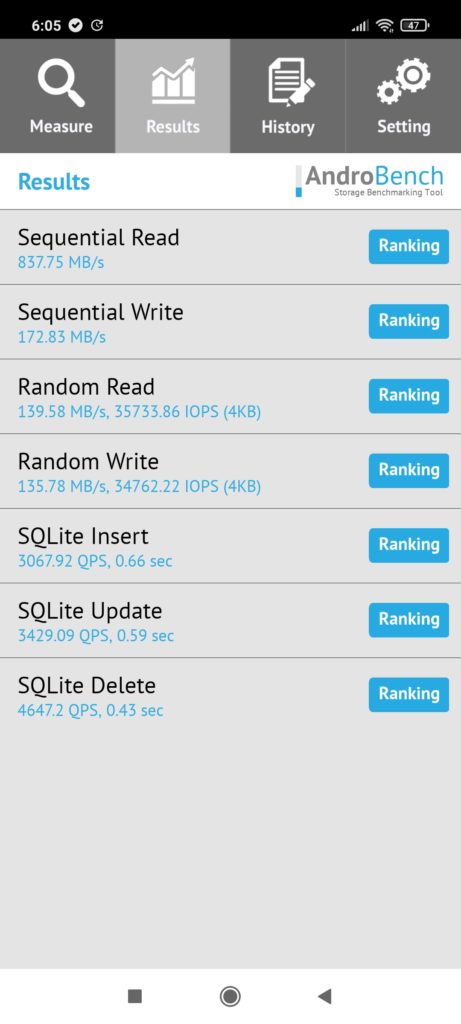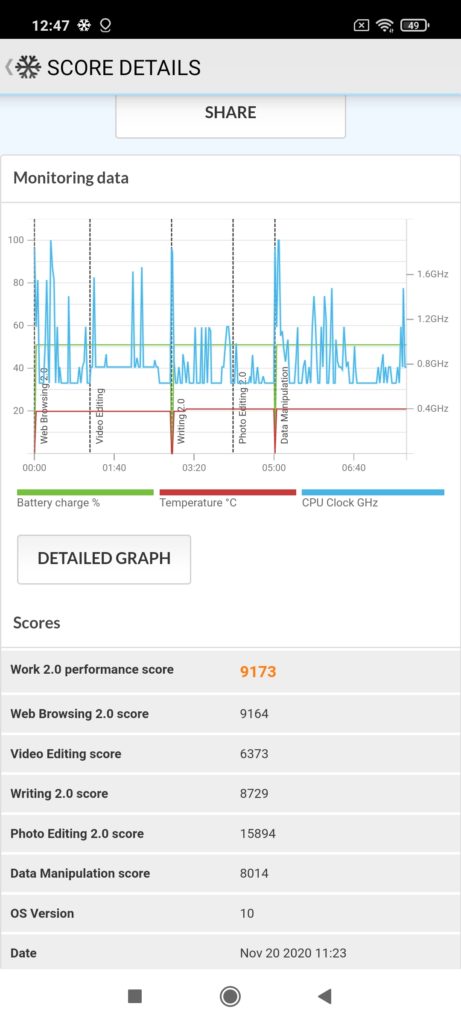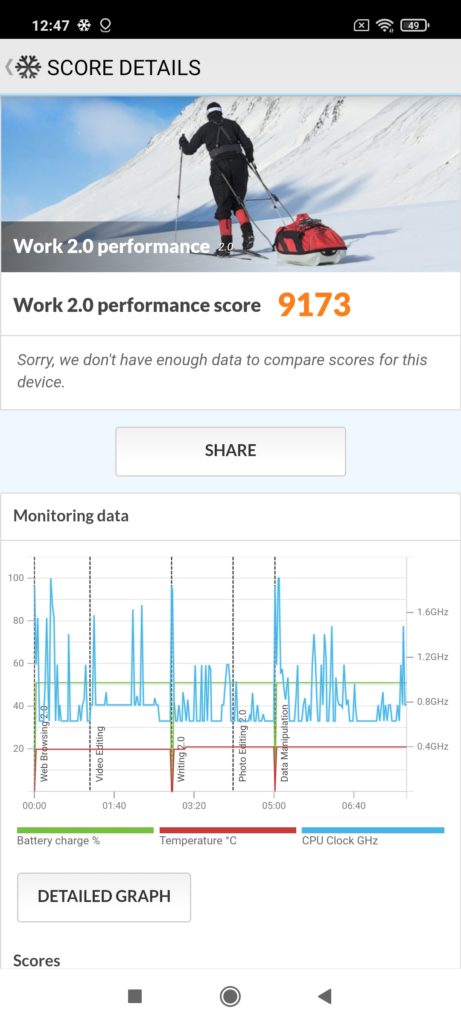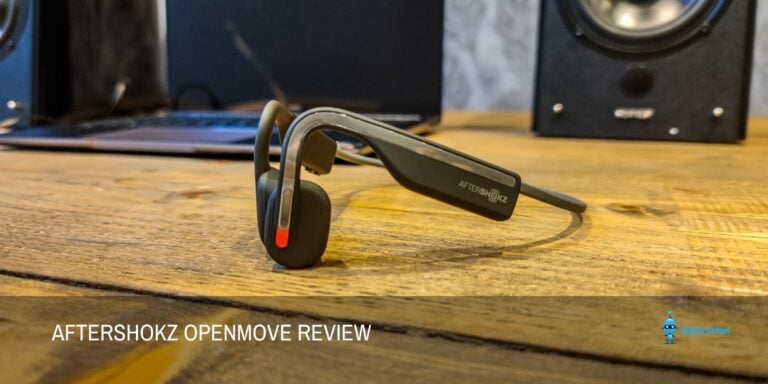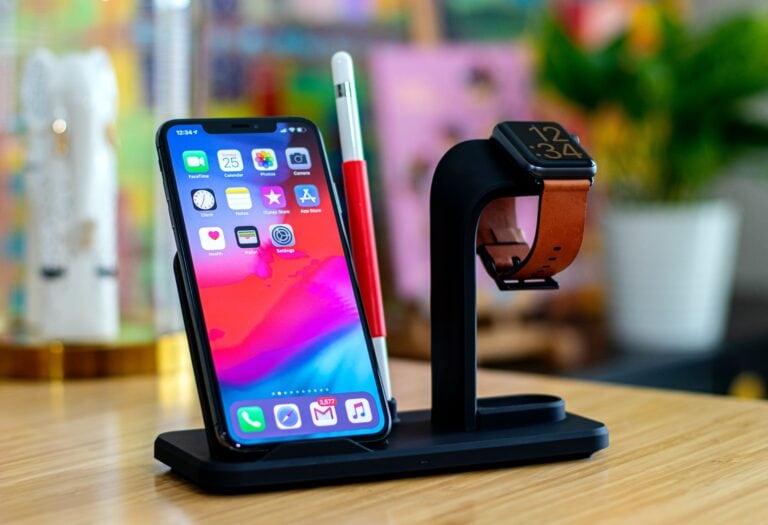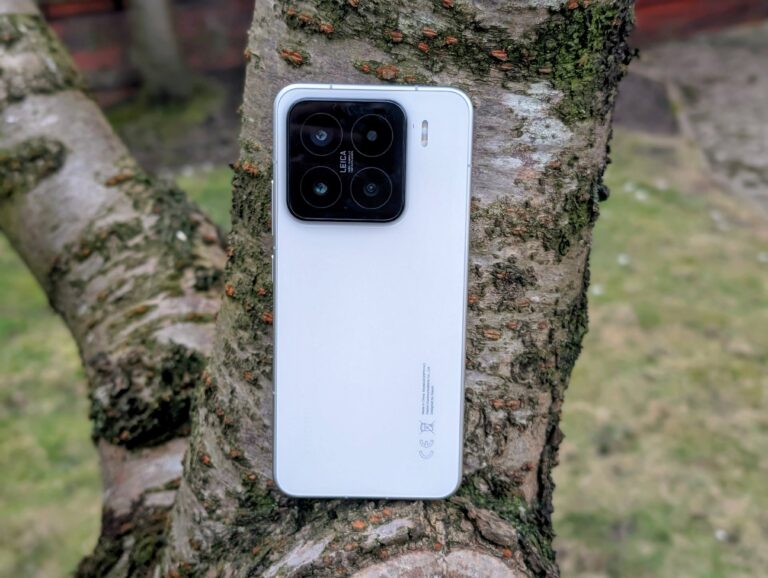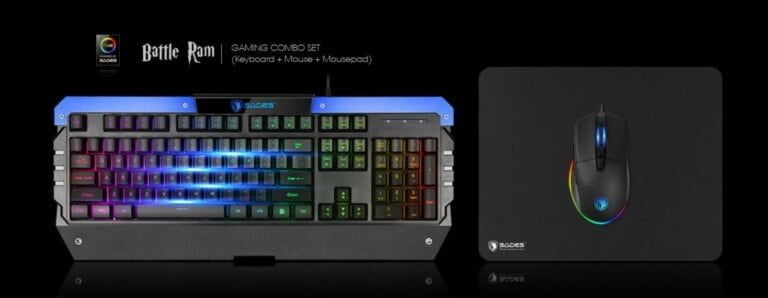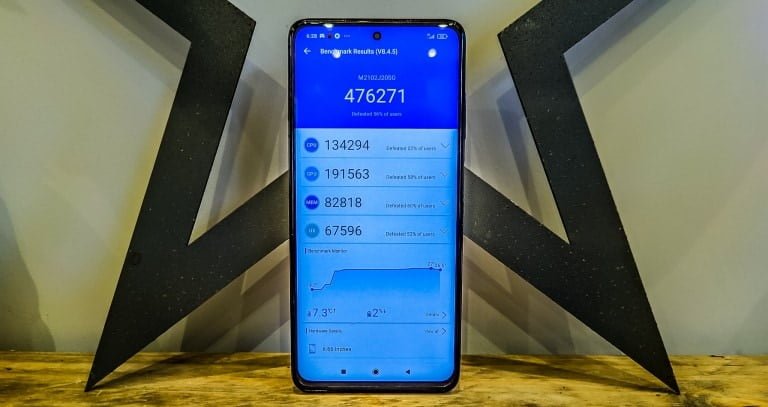Any links to online stores should be assumed to be affiliates. The company or PR agency provides all or most review samples. They have no control over my content, and I provide my honest opinion.
I finally got a chance to review the Poco X3 NFC at the end of October. My review sample had arrived much later than expected and in the meantime, the Xiaomi Mi 10T Lite 5G had been announced and released.
The two phones are almost identical, both in looks and specification, the main difference is that the Xiaomi swaps out the 4G Snapdragon 732G for the 5G Snapdragon 750 5G.
The Qualcomm Snapdragon 750G offers a lot more than just a 5G connectivity vs the Snapdragon 732G.
In fact, I’d say the 5G connectivity is the least important upgrade. Maybe I am stereotyping people, but if you are looking at a sub-£300 phone, it is quite likely you want everything to be affordable (as do I). Most affordable contracts from the likes of Smarty, Three and Voxi, don’t offer 5G as standard, then 5G coverage is sporadic at best depending on where you live.
What is interesting about the SD750G is the upgrade to the Arm Coretex A77 CPU cores, which makes this have a better CPU spec than its more expensive brother the SD765G.
This led me to conclude that the Poco X3 NFC was great, but the Xiaomi Mi 10T Lite 5G was probably better.
If you opt for the same base spec of 6GB RAM and 64GB Storage the RRP of the phone is £199 and £229. Current pricing is £179 and £199.
I’d argue that £20-£30 price difference is well worth the extra for a much better chipset.
When I made my conclusion, I hadn’t actually used the Xiaomi, so I figured I should put my money where my mouth is and buy it for myself since Xiaomi are woefully short on loan review samples.
I have only had the phone a few days, so this is just an initial review, my final review will be kept brief too, it is identical to the excellent Poco X3, so there is no point rehashing stuff I have already covered.
| Preview | Product | Rating | Price | |
|---|---|---|---|---|

| Xiaomi Mi 10T Lite 5G - Smartphone 6+64GB, 6,67” FHD+... | Buy on Amazon |
Xiaomi Mi 10T Lite 5G Specification
- Display: 6.47 Inch, 120Hz 2400×1080 IPS display, 450 nits typ. brightness
- Chipset: Qualcomm Snapdragon 750G
- RAM: 6GB
- Storage: 64GB and 128GB models
- Rear Camera: 64MP Sony IMX682, 8MP ultra-wide, 2MP macro, 2MP depth
- Front Camera: 16MP selfie
- Battery: 4820 mAh with 33W charging
Qualcomm Snapdragon 750G vs Snapdragon 732G Specification
The Snapdragon 732G was a special release just for the Poco X3 offering the smallest of improvements over the existing Snapdragon 730G.
The Snapdragon 750G has a lot of similarities, it stays on the same 8nm fabrication processes, uses the same CPU design with the same Cortex-A55 clocked at 1.8Ghz. However, it shifts to the Arm Coretex A77 CPU for its two performance cores, a CPU design that has been restricted to flagship devices until now.
Then the GPU is upgraded, and memory also sees an improvement in frequencies.
As we already knew, the Snapdragon 750G offers 5G connectivity thanks to the X52 modem vs 4G/LTE of the X15.
Design Differences
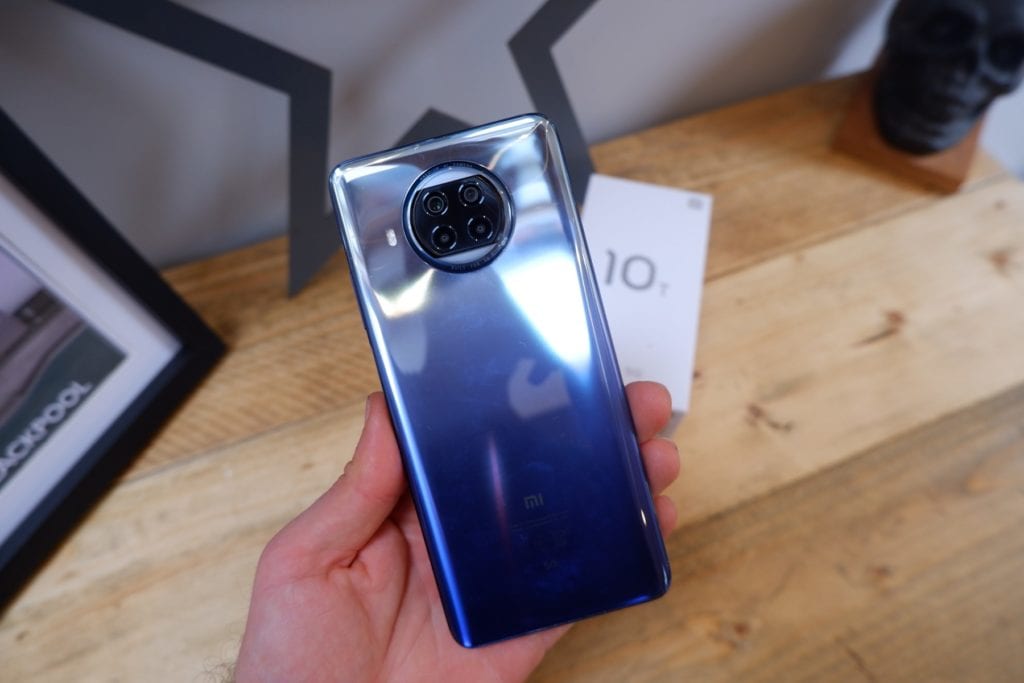
They are essentially the same. However, the Xiaomi ditches the gaudy brand letting up the phone adopting a more discrete Mi logo on the back. The colour is a big improvement too, while I said the Poco was quite ugly, I the Xiaomi. I would never let the colour or design of a phone affect my buying decision, though.
The Xiaomi is also listed as having a glass back, it did feel more premium in my hand when I got it out of the box, but I no longer have the Poco, so this could be in my head.
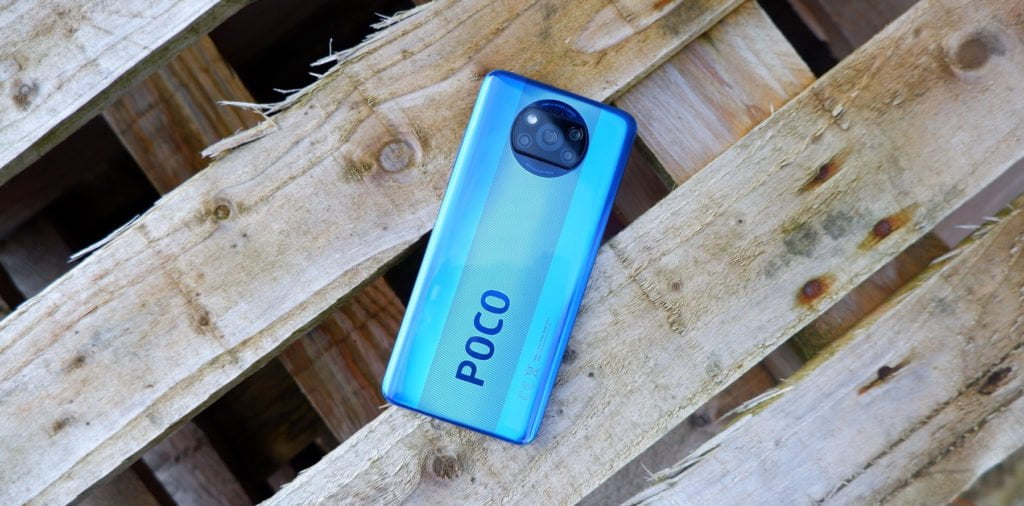
Other Differences
Just to be thorough, there are other small differences that work in favour of the Poco.
- It has a bigger battery 5160 mAh vs 4820 mAh
- The selfie camera has 20MP vs 16MP
- The Poco is also rated for IP53 which is about as basic as it gets but still better than the Xiaomi.
It is worth noting that the Xiaomi offers 720P/1080P slow-motion video with 120 fps/ 240 fps/ 960fps
Camera Performance & Samples
I have only had the phone a few days, and between lockdown and the current dreadful weather, I have only been outside once with the camera. It should perform identically to the Poco X3.
What is more important is that the 64MP Sony sensor that is used on both of these phones is better than the 48MP Samsung sensor used on the similarly priced Realme 7 and Realme 7 5G.
So, while the MediaTek chipsets on the Realme phones offer better gaming performance, the Poco/Xiaomi phones are better for anyone that wants to take good photos.
Qualcomm Snapdragon 750G vs Snapdragon 732G Benchmarks and Overall Performance
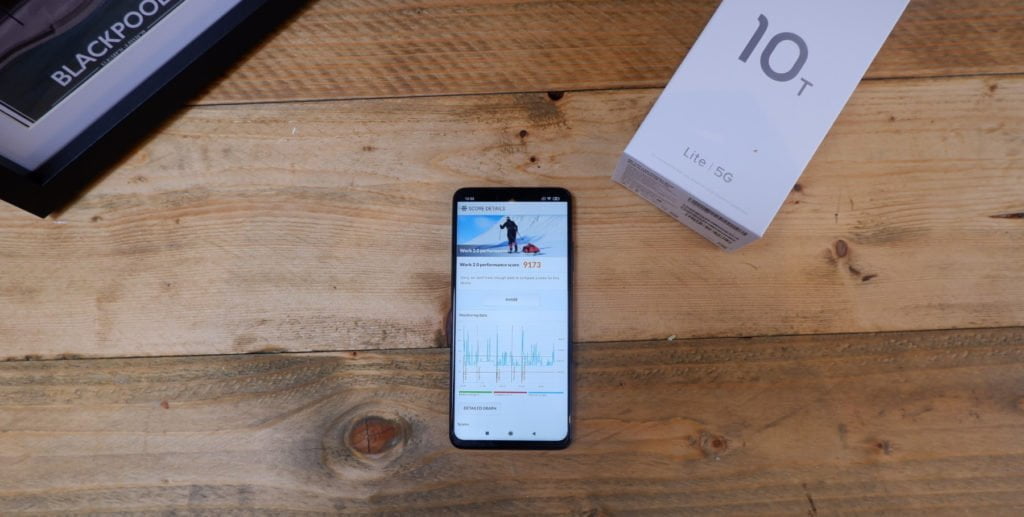
Antutu Benchmarks
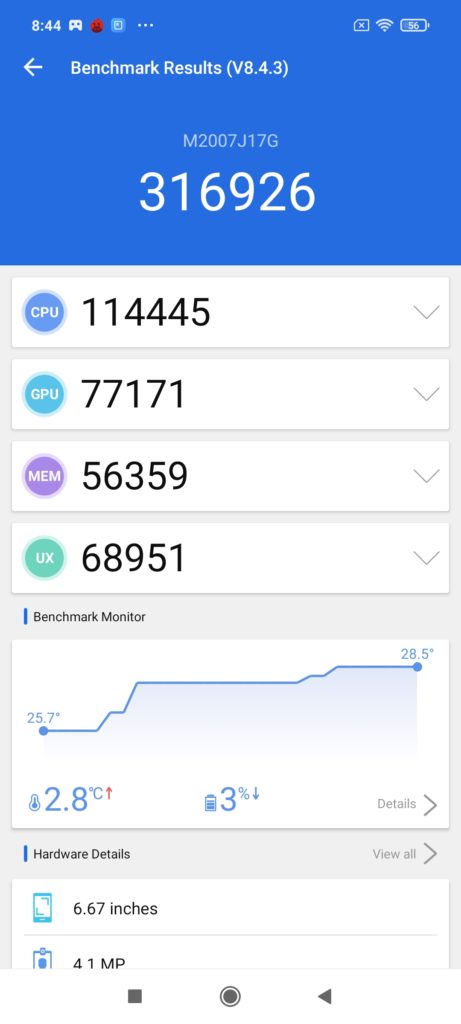
Xiaomi Mi 10T Lite 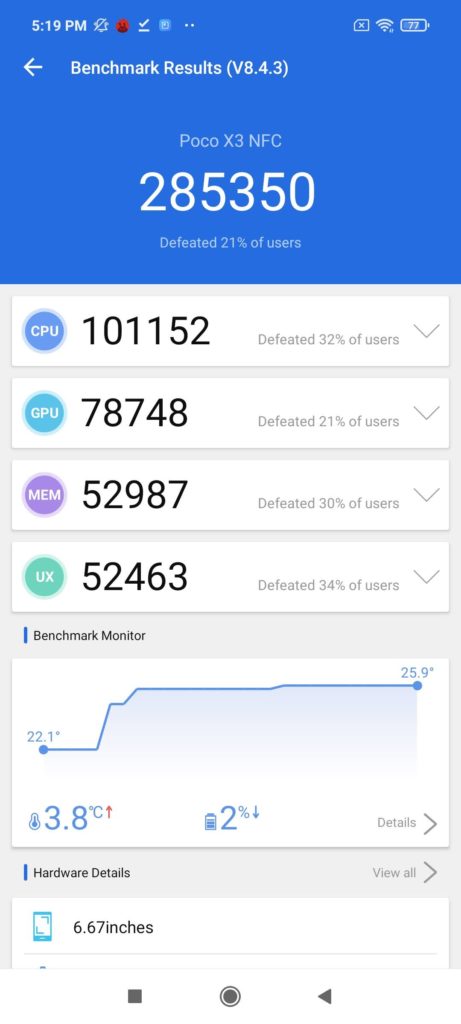
Poco X3
With a score of 285350 vs 316926, the Qualcomm Snapdragon 750G offers a 10% improvement. The CPU score shows an improvement of 13% while the GPU actually shows a drop in 2%. Not quite the result I was expecting, but it is what it is.
Geekbench Benchmarks
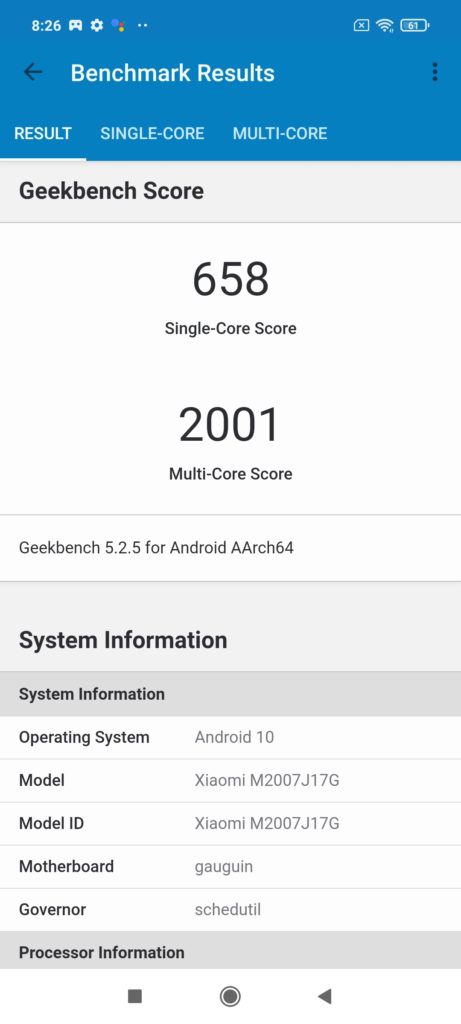
Xiaomi Mi 10T Lite 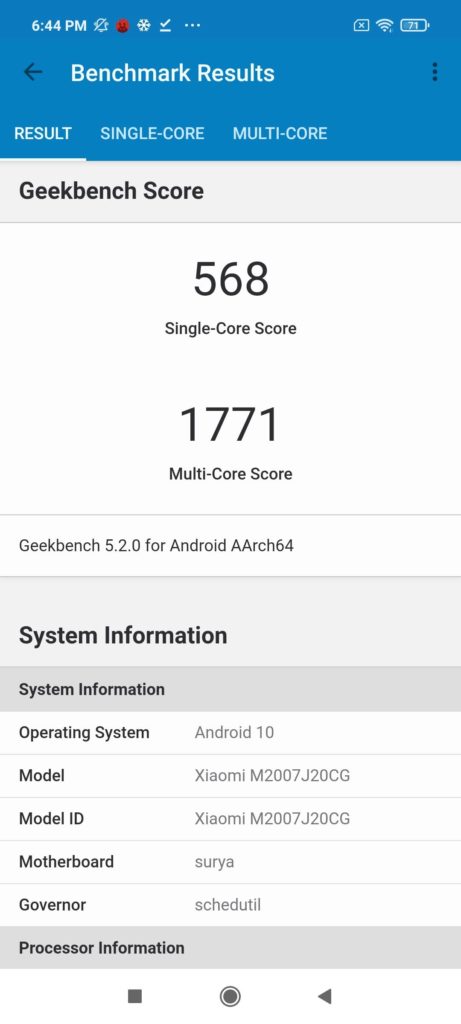
Poco X3
In Geekbench, we see almost 16% improvement in the single-core result and 12% for the multicore. This gives the Snapdragon 750G a similar CPU performance as flagship chipsets from early 2019.
3DMark Gaming Benchmarks
Frustratingly I am unable to get this to run at the moment, so I can’t compare. The results are inevitable though, the Snapdragon 750G will offer a superior gaming experience, by how much remains in question.
Overall Performance
With me not having both phones together, it hard to compare real-world performance. Both devices have plenty of processing power, the combination of the excellent chipset on both phones and the 120Hz display means everything runs incredibly smoothly, it feels like you are using a flagship device even though they cost about 25% the price.
Overall
My overall opinion so far is as expected, I think the Xiaomi Mi 10T Lite is well worth the extra money over the Poco X3 NFC. It looks better, performs better and has the benefit of 5G connectivity. While I did say the 5G aspect was minor currently due to coverage and a lack of affordable 5G contract, this will change as the months/years progress so the phone will stay a bit more up to date than the Poco.
If that price difference feels like a lot to you, I wouldn’t stress too much about getting the Poco X3; the benchmarks show that the two phones are not that far apart in terms of general performance. Many people probably wouldn’t be able to tell the difference.
This ticks almost all the boxes I want from a phone currently. Excellent general performance, decent camera, superb battery. I would have preferred an AMOLED display, and I want IP protection due to my demanding running/cycling routine, but overall, considering the current £199 price I don’t think there is any other phone I would pick.
| Preview | Product | Rating | Price | |
|---|---|---|---|---|

| Xiaomi Mi 10T Lite 5G - Smartphone 6+64GB, 6,67” FHD+... | Buy on Amazon |
Xiaomi Mi 10T Lite 5G Review Rating
Summary
Officially the cheapest 5G phone available in the UK (unlike questionable claims from other companies).
For the price, this is a superb phone and in my opinion is well worth the small price difference between the Poco X3
Overall
92%-
Overall - 92%92%
Pros
- 64MP Sony sensor
- Most affordable 5G phone on the market
- Snadpragon 750G chipset is fantastic
Cons
- No IP rating
- I’d take AMOLED over IPS any day of the week
I am James, a UK-based tech enthusiast and the Editor and Owner of Mighty Gadget, which I’ve proudly run since 2007. Passionate about all things technology, my expertise spans from computers and networking to mobile, wearables, and smart home devices.
As a fitness fanatic who loves running and cycling, I also have a keen interest in fitness-related technology, and I take every opportunity to cover this niche on my blog. My diverse interests allow me to bring a unique perspective to tech blogging, merging lifestyle, fitness, and the latest tech trends.
In my academic pursuits, I earned a BSc in Information Systems Design from UCLAN, before advancing my learning with a Master’s Degree in Computing. This advanced study also included Cisco CCNA accreditation, further demonstrating my commitment to understanding and staying ahead of the technology curve.
I’m proud to share that Vuelio has consistently ranked Mighty Gadget as one of the top technology blogs in the UK. With my dedication to technology and drive to share my insights, I aim to continue providing my readers with engaging and informative content.
Last update on 2025-07-02 / Affiliate links / Images from Amazon Product Advertising API

